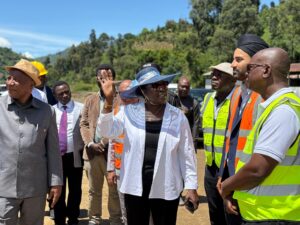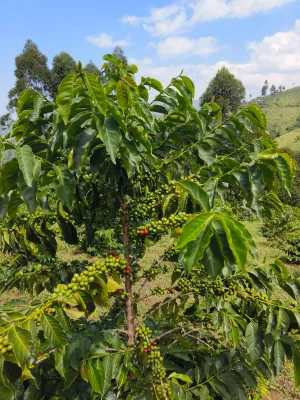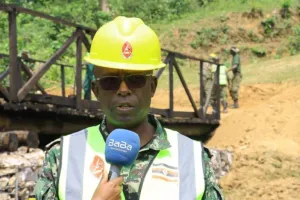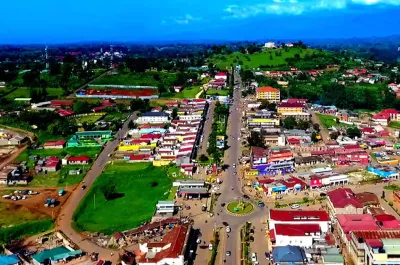
Minerals
Uganda Poised to Capitalise on Looming Global Copper Shortfall as Kilembe Mines Revamp Takes Off
As the world races towards a clean energy future and increasingly relies on digital infrastructure, a stark warning from the United Nations Conference on Trade and Development (UNCTAD) signals a potential bottleneck: a looming global copper shortfall. This week’s Global Trade Update highlights that the surge in demand for this crucial metal, dubbed the “new strategic raw material,” could outstrip supply, potentially derailing global ambitions for a greener and more connected world.
For Uganda, however, this looming crisis presents a significant opportunity. The country, endowed with substantial copper deposits in Kasese, is embarking on a determined effort to revitalise its copper production. In a symbolic move on Thursday, the Minister of Energy and Mineral Development, Ruth Nankabirwa, officially handed over the reins of the Kilembe Mines to a consortium comprising the Uganda National Mining Company (UNMC) and the Sarrai Group.
“This marks a new chapter in Uganda’s mining sector,” declared Minister Nankabirwa at the handover ceremony. Kilembe Mines, nestled in the foothills of the majestic Rwenzori Mountains, stands as Uganda’s largest known copper reserve, boasting an estimated deposit of over 4 million tons of copper ore. Furthermore, the region holds an undetermined wealth of cobalt ore, another critical mineral for the energy transition, and approximately 2,800 acres of largely unexplored land, hinting at even greater potential.
The UNCTAD report paints a clear picture of the impending supply-demand imbalance. Global copper demand is projected to surge by over 40% by 2040, driven by its indispensable role in electric vehicles, renewable energy systems (like solar and wind power), artificial intelligence infrastructure, data centres, and smart grids. Professor Daniel Franks, Director of the Global Centre for Mineral Security at the University of Queensland Sustainable Minerals Institute, underscores this point, stating, “Copper is probably the most important metal of the energy transition… it carries electrons and therefore is important in all of the technologies.” He further notes the established significance of copper in existing electrical and communication infrastructure.
However, the current supply trajectory is struggling to keep pace with this escalating demand. UNCTAD estimates that meeting the projected needs may necessitate the development of a staggering 80 new mines, requiring a colossal investment of $250 billion by 2030. This challenge is compounded by factors such as declining ore grades in existing mines, increasing geopolitical risks, and the lengthy development timelines for new mining projects, which can stretch up to 25 years.
The report also highlights a critical vulnerability for resource-rich developing nations like Uganda. While countries such as Australia, Chile, Peru, the Democratic Republic of Congo, and Russia hold over half of the world’s copper reserves, much of the value addition occurs elsewhere. China, for instance, imports 60% of global copper ore and dominates the refining process, producing over 45% of the world’s refined copper.

UNCTAD’s analysis reveals that many resource-rich nations remain trapped at the bottom of the value chain, primarily exporting raw materials and missing out on the economic benefits of industrialisation. Tariff escalation, where duties increase on more processed goods (ranging from under 2% on refined copper to up to 8% on finished products like sheets and wires), can further disincentivise these nations from developing their own processing and manufacturing capabilities. The report also notes that most major copper exporters lag behind the global average in economic complexity, emphasising the urgent need for strategic investments in infrastructure, skilled labour, and targeted trade policies.
Luz María de la Mora, Director of UNCTAD’s Division on International Trade and Commodities, emphasises the strategic importance of copper in this new economic landscape. “Copper is no longer just a commodity – it’s a strategic asset,” she asserts. “Its market exposes the power asymmetries that still shape global trade. That’s why we need to invest in local value addition, scale up recycling and remove trade barriers that limit opportunity. This is a moment where all countries can win – if trade is made to work for development.”
The handover of Kilembe Mines signals Uganda’s ambition to move beyond simply exporting raw materials. By partnering with the Sarrai Group, the government aims to leverage their expertise and investment to not only revive copper extraction but also potentially explore opportunities for local processing and value addition. This strategic move aligns perfectly with UNCTAD’s recommendations for resource-rich nations to capitalise on the growing demand for critical minerals.
Furthermore, the UNCTAD report highlights the increasing importance of copper recycling. In 2023, approximately 4.5 million tons of refined copper, representing nearly 20% of global supply, originated from secondary sources. Developed nations like the United States, Germany, and Japan are leading scrap exporters, while China, Canada, and South Korea are major importers. For developing countries like Uganda, building local capacity in copper recycling presents a strategic pathway to reduce import dependence, lower carbon emissions, and foster circular economy practices, promoting environmental sustainability and efficient resource utilisation.
The UNCTAD report concludes that copper serves as a critical “test case” for how the global trade system will manage the increasing pressures on essential materials amidst geopolitical tensions, fragmented supply chains, and evolving industrial policies. The report urges the adoption of smarter trade and industrial strategies, including streamlined permitting processes, reduced tariffs, and the development of regional value chains, to empower developing countries to climb the value chain and participate more equitably in the ongoing energy and technological transformations.
For Uganda, the revival of Kilembe Mines represents a crucial step in this direction. If managed strategically, with a focus on sustainable practices, local value addition, and the potential for developing a robust recycling sector, Uganda could position itself as a significant player in the global copper market, contributing to the world’s clean energy transition while simultaneously boosting its own economic development and complexity. The looming copper shortfall, therefore, is not just a global challenge but also a unique window of opportunity for Uganda to shine on the world stage.














Sunrise Reporter
Leave a Comment
Your email address will not be published.